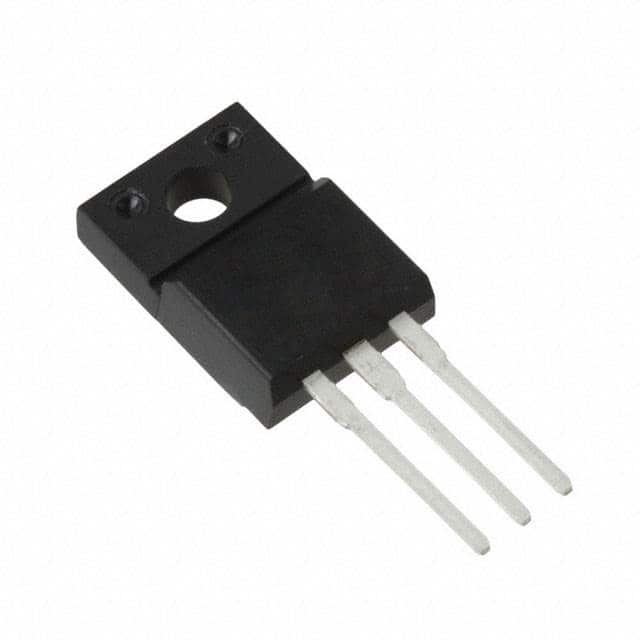Viz Specifikace pro podrobnosti o produktu.

2SA1869-Y,MTSAQ(J)
Product Category: Transistor
Basic Information Overview: - Category: Bipolar Junction Transistor (BJT) - Use: Amplification of electrical signals - Characteristics: High voltage and current capability, low noise, high frequency response - Package: TO-92 package - Essence: Small signal PNP transistor - Packaging/Quantity: Typically available in reels of 2000 units
Specifications: - Collector-Base Voltage (VCBO): -120V - Collector-Emitter Voltage (VCEO): -120V - Emitter-Base Voltage (VEBO): -5V - Collector Current (IC): -1A - Power Dissipation (PD): 400mW - Transition Frequency (fT): 150MHz - Noise Figure (NF): 3dB
Detailed Pin Configuration: - Pin 1 (E): Emitter - Pin 2 (B): Base - Pin 3 (C): Collector
Functional Features: - High voltage and current ratings - Low noise performance - Suitable for high-frequency applications
Advantages: - Wide operating voltage range - Low noise figure - High transition frequency
Disadvantages: - Relatively low current rating compared to some alternatives - Limited power dissipation capability
Working Principles: The 2SA1869-Y,MTSAQ(J) operates based on the principles of bipolar junction transistors, utilizing the flow of charge carriers across its three terminals to amplify electrical signals.
Detailed Application Field Plans: - Audio amplifiers - RF amplifiers - Oscillator circuits - Signal processing circuits
Detailed and Complete Alternative Models: - 2SC1815 - BC557 - MPSA18 - 2N3906
This comprehensive entry provides an in-depth understanding of the 2SA1869-Y,MTSAQ(J), covering its category, basic information overview, specifications, pin configuration, functional features, advantages and disadvantages, working principles, application field plans, and alternative models.
Seznam 10 běžných otázek a odpovědí souvisejících s aplikací 2SA1869-Y,MTSAQ(J v technických řešeních
What is the 2SA1869-Y,MTSAQ(J transistor used for?
- The 2SA1869-Y,MTSAQ(J is commonly used as a high-frequency amplifier in various technical solutions.
What are the key specifications of the 2SA1869-Y,MTSAQ(J transistor?
- The transistor has a maximum collector current of 1.5A, a maximum collector-base voltage of 120V, and a maximum power dissipation of 0.75W.
How can I ensure proper heat dissipation when using the 2SA1869-Y,MTSAQ(J in my circuit?
- It's important to use appropriate heat sinks and ensure proper ventilation to dissipate the heat generated during operation.
What are the typical applications of the 2SA1869-Y,MTSAQ(J transistor?
- Typical applications include RF amplifiers, audio amplifiers, and general-purpose amplification in electronic circuits.
What are the recommended operating conditions for the 2SA1869-Y,MTSAQ(J?
- The transistor should be operated within the specified temperature range of -55°C to 150°C and under the recommended voltage and current limits.
Can the 2SA1869-Y,MTSAQ(J be used in high-frequency applications?
- Yes, the transistor is suitable for high-frequency applications due to its design and performance characteristics.
What precautions should be taken when soldering the 2SA1869-Y,MTSAQ(J onto a PCB?
- Care should be taken to avoid overheating the transistor during soldering, and proper ESD precautions should be followed to prevent damage.
Is there a recommended biasing configuration for the 2SA1869-Y,MTSAQ(J?
- Biasing configurations may vary based on the specific application, but typical configurations include common-emitter and common-base setups.
What are the potential failure modes of the 2SA1869-Y,MTSAQ(J transistor?
- Common failure modes include thermal runaway, overvoltage stress, and excessive current leading to breakdown.
Are there any alternative transistors that can be used as substitutes for the 2SA1869-Y,MTSAQ(J?
- Depending on the specific requirements, alternatives such as 2SC5353 or 2N3904 may be considered as substitutes, but it's important to carefully evaluate their suitability for the intended application.

